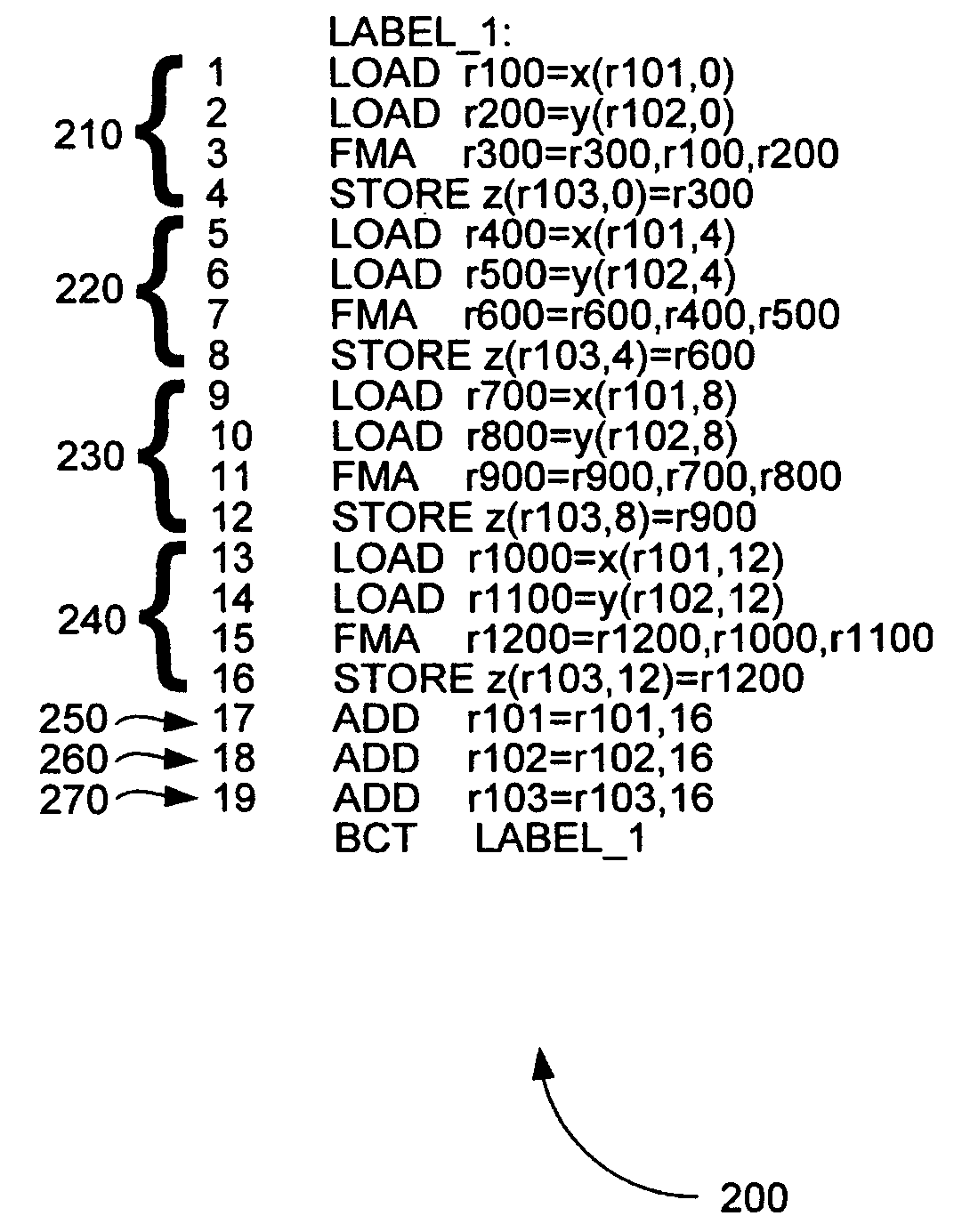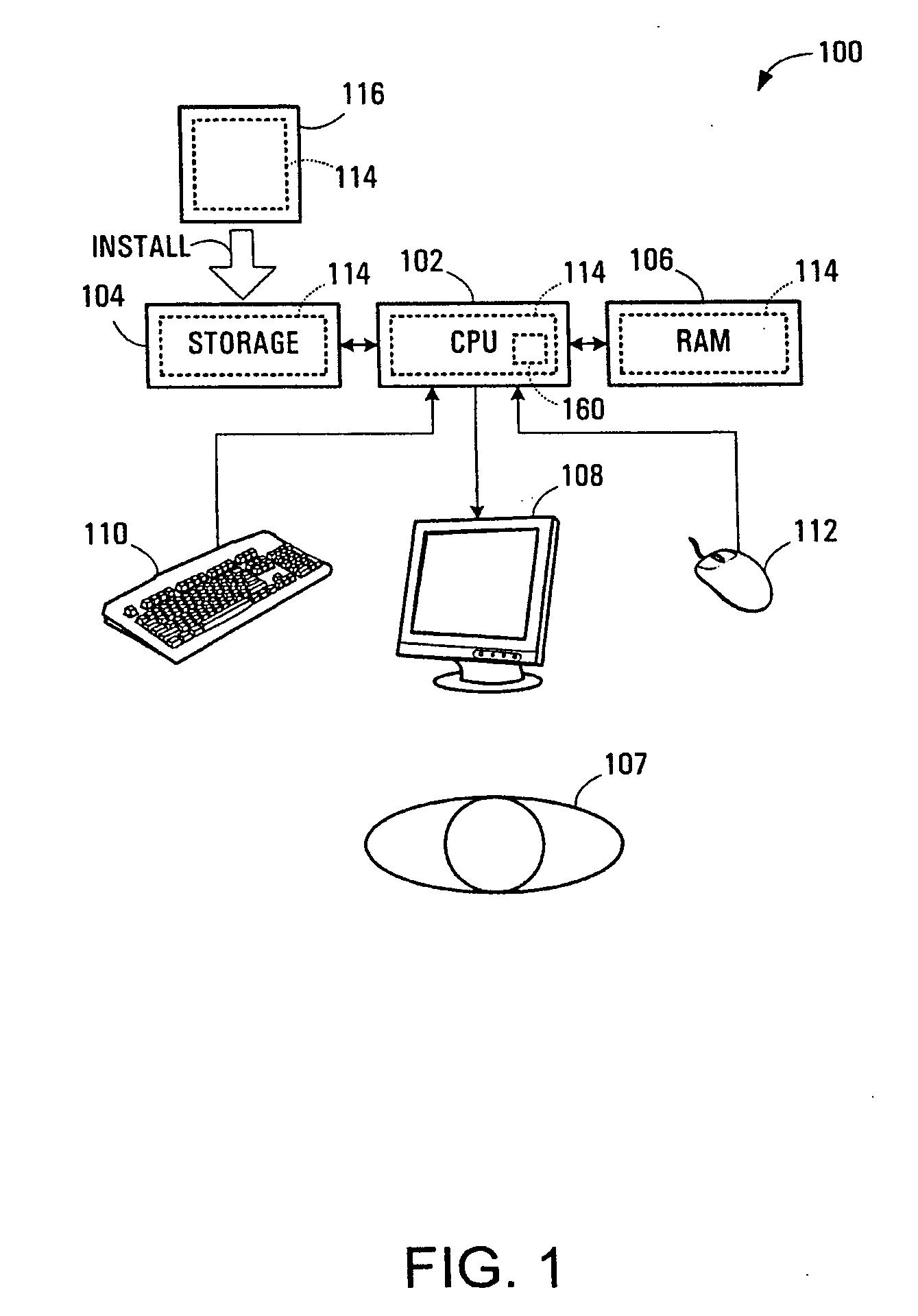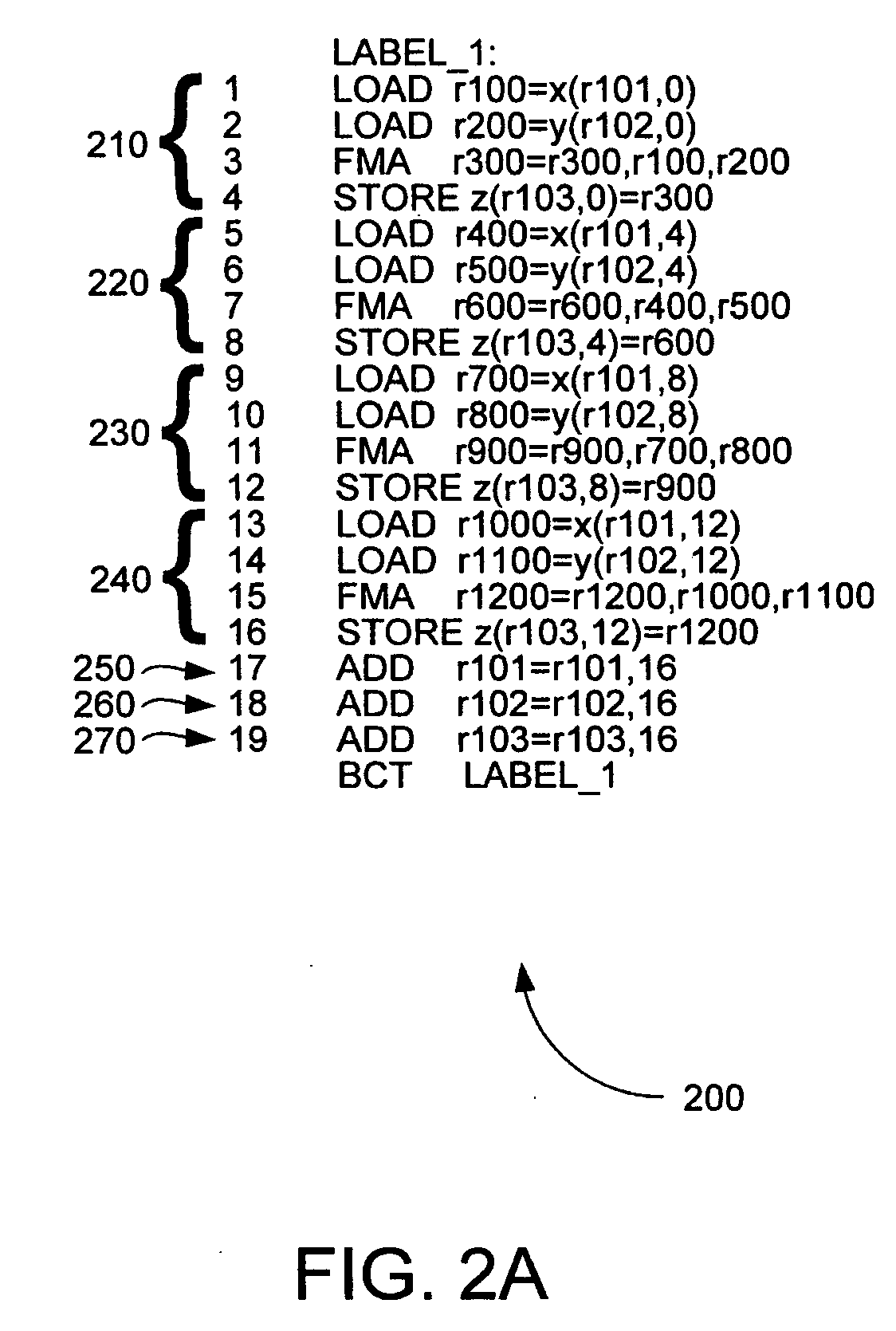Scheduling technique for software pipelining
a software and schedule technology, applied in the field of computer systems and programs, can solve the problems of cumbersome bunching of instructions at various times, inability to find optimal schedules, and difficulty in finding optimal schedules
- Summary
- Abstract
- Description
- Claims
- Application Information
AI Technical Summary
Benefits of technology
Problems solved by technology
Method used
Image
Examples
example
Consider the illustrative scheduling process 400A in FIG. 4A. By way of example, this scheduling process 400A may be generated by using the SMS technique introduced above to schedule the looped computer program 200 of FIG. 2. As shown, the scheduling process 400A may comprise a plurality of “scheduler actions”, labeled by reference numerals 401-415. Corresponding actual (i.e. physical) “machine usage” is shown to the right of each “scheduler action”401-415.
More specifically, “machine usage” may be explained as follows. Consider a microprocessor having different resources available for use in each clock cycle. Typical types of resources available may include, for example, “issue” units, “arithmetic execution” units, and “load / store” units. If a loop contains certain instructions, then the number of resources required for executing the loop can be calculated. Then, for each resource available, the minimum execution time of the loop can be calculated by: min_time=(resources required...
PUM
 Login to View More
Login to View More Abstract
Description
Claims
Application Information
 Login to View More
Login to View More - R&D
- Intellectual Property
- Life Sciences
- Materials
- Tech Scout
- Unparalleled Data Quality
- Higher Quality Content
- 60% Fewer Hallucinations
Browse by: Latest US Patents, China's latest patents, Technical Efficacy Thesaurus, Application Domain, Technology Topic, Popular Technical Reports.
© 2025 PatSnap. All rights reserved.Legal|Privacy policy|Modern Slavery Act Transparency Statement|Sitemap|About US| Contact US: help@patsnap.com



